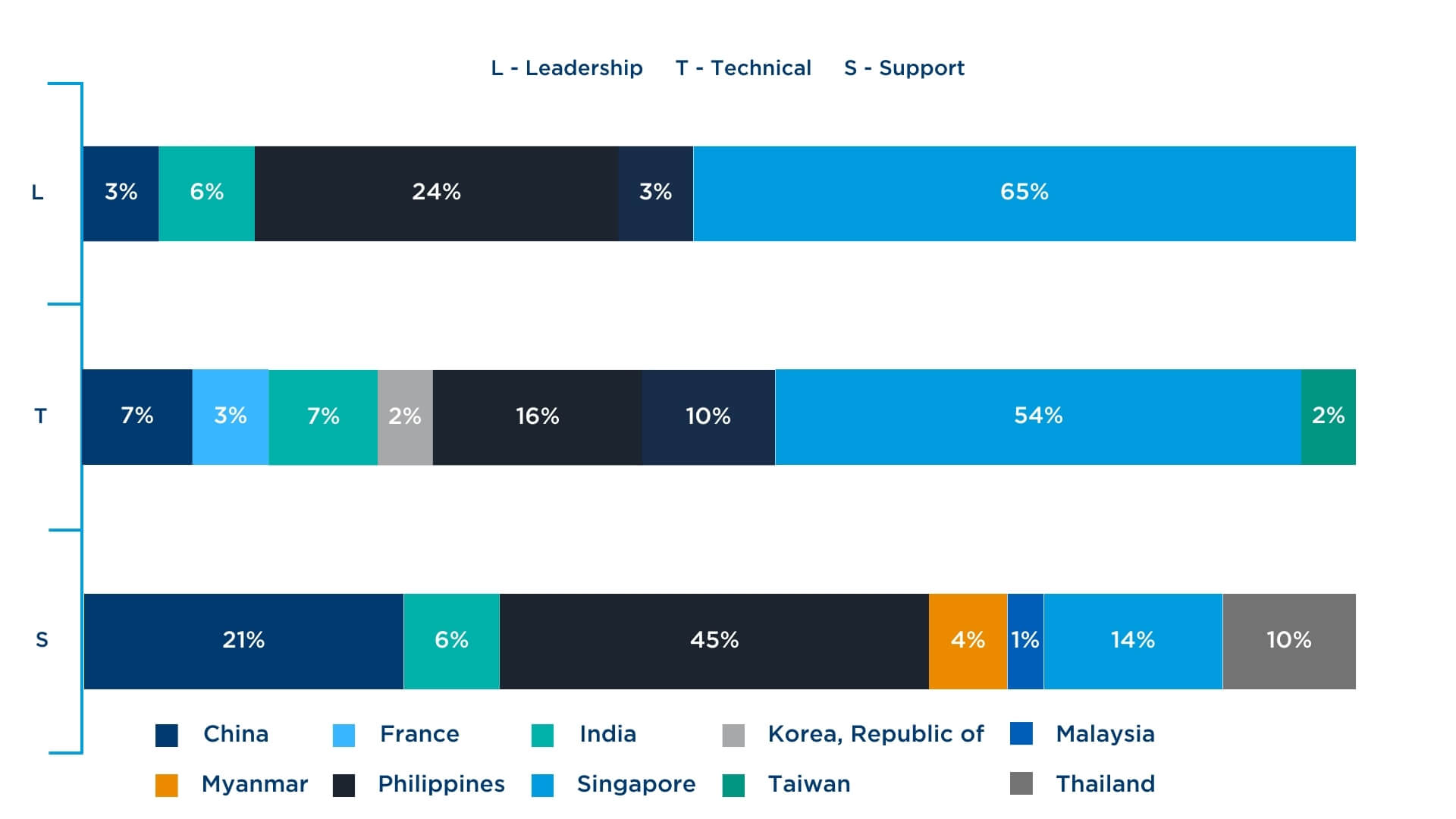Our evidence-based consulting expertise creates more diverse companies and can boost operational efficiency.
A multinational engineering company headquartered in France, asked us to analyse the level of diversity and inclusion within their processes and practices. The company suspected there was bias relating to diversity of nationality, but they did not know its extent or how to address it.
The client’s problem
The company employs over 3,000 people across seven countries and 32 nationalities, and believed they were inherently diverse because of it. When examining nationality by job level and job title in each country, the initial picture appeared positive with many different nationalities working across their international sites.
However, when considering leadership, technical and support levels, workplace inequities were identified:
- 58% of total employees came from a single location.
- Only three countries recorded employees of more than one nationality.
- While surface level diversity existed across these locations, the lack of cross-nationality representation indicates siloed workforce dynamics.
In Figure 1 below, significant inequality was found in individuals’ roles. At the lower business levels, there was a wider representation of nationalities, but fewer were represented further up the leadership levels. This highlighted that employees of certain nationalities did not have the same progression opportunities as others.

Figure 1: Nationality by Grade of Employee
Our solution
To inform and advise the senior leadership team of their next steps, a thorough, holistic approach was needed, considering existing policies, practises and behaviours. During our investigation, we gathered extensive, complex data from qualitative and quantitative assessments, supported by feedback from focus groups. Depending on the size of the organisation, between 5-20% of the workforce are interviewed in a psychologically safe way, avoiding reporting line conflicts.
The company was recruiting 10 times as many employees as they were promoting, and to transition from a buy to a build culture, we advised statistical measures around their talent pipeline funnel which needed a greater balance of nationalities.
We worked with the firm to investigate how team-level diversity impacted performance. Analysing the output of 350+ operators working across 11 different teams, we correlated team diversity - age, gender, nationality, tenure and working hours - to their operational efficiency. The analysis found that overall team diversity was significantly linked to operational efficiency, with every 10% increase in team diversity increasing operational efficiency by 7% (Figure 2, below). Delivering tailored, robust, accountable and visible measures, organisations are better equipped to optimise their talent diversity.

Figure 2: Team Diversity Plotted Against Their Operational Efficiency.
The result
The findings from the analyses brought about a deep shift in mindset, with the company quickly implementing several steps, including:
- firm-wide communication of the commitment to DE&I along with the bespoke business case by the CEO outlining everyday employee actions;
- education of DE&I linked to the quantitative evidence of employees without access to the same opportunities and creating team action plans;
- and producing scorecards by country focussing on specific key performance indicators and metrics.
It is easy to assume that global organisations are inherently diverse, however moving beyond surface level demographics reveals invisible inequity. An open-minded approach to receiving feedback and commitment to action is key to ensuring an inclusive workplace for all.
__________________________________________________________
Get in touch. Follow the links below to discover more, or contact our dedicated leadership experts from your local Odgers Berndtson office here.

Never miss an issue
Subscribe to our global magazine to hear our latest insights, opinions and featured articles.
Follow us
Join us on our social media channels and see how we're addressing today's biggest issues.



